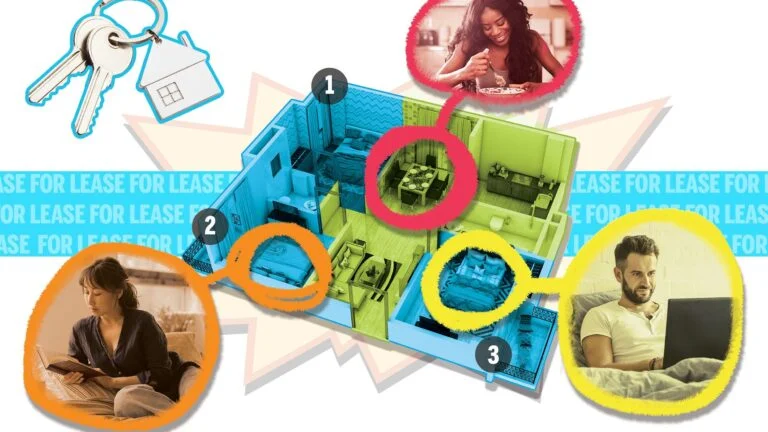
In Boston, the concept of co-living—where tenants rent bedrooms while sharing common spaces like kitchens and bathrooms—has been met with mixed results. While some developers are enthusiastic about the potential of this housing model to offer affordable living options in desirable neighborhoods amid an escalating housing crisis, others are reconsidering their investment as the model doesn’t always lead to reduced living costs.
Paige Roosa, director of Boston’s Housing Innovation Lab, expressed concerns about the affordability of these developments. “From what we’re seeing, the rents for these smaller, compact units don’t decrease proportionally to their size,” Roosa explained. This insight comes after the city’s pilot program aimed to promote such compact living spaces to address Boston’s severe affordability issues.
On one hand, 7Ink by National Development has embraced the model, offering fully furnished apartments with utilities and cleaning services included in the rent, promoting a hassle-free living experience. Jessica Buonopane, senior vice president at National Development, called their building a “test of the market,” and indicated plans to expand on the co-living concept based on its success.
Conversely, Thatch, a branch of Boston Real Estate Collaborative, is transitioning some of its co-living spaces back to traditional rentals. Brent Berc, a founding partner at Thatch, noted that while the model initially seemed sustainable, the increased operational costs and the rising price of housing have made co-living less viable. “As the cost of housing rises, so does the cost of co-living,” Berc said, hinting at a reevaluation of their co-living strategy.
The adoption of co-living in the U.S. has seen significant growth, with the number of units jumping from fewer than 100 beds in 2014 to over 7,000 by 2019. This model promises up to a 30% reduction in total housing costs compared to renting a studio apartment, though it comes at a price of increased cost per square foot.
The pilot program launched by the Housing Innovation Lab in 2018 set guidelines for constructing “compact living units,” smaller than typical apartments, aiming to increase affordability and build community. Despite approving several projects under these guidelines, the results so far have been mixed, leading to ongoing evaluations about the true affordability of co-living developments.
As the market continues to evolve, developers like National Development are optimistic about the future of co-living, especially for young professionals and people relocating to Boston who value flexibility and convenience. However, the sustainability of co-living in high-cost areas like Boston remains under scrutiny as developers and residents weigh the benefits against increasing costs and operational challenges.